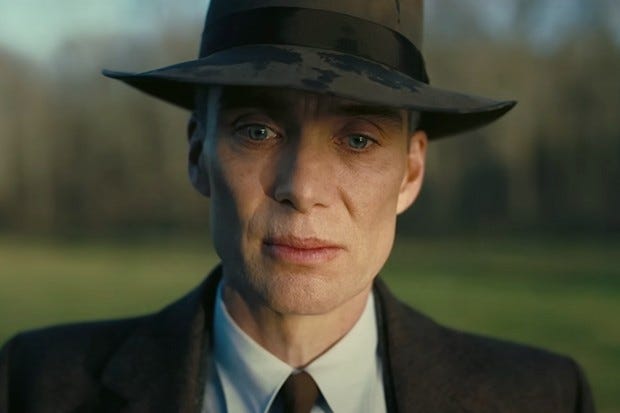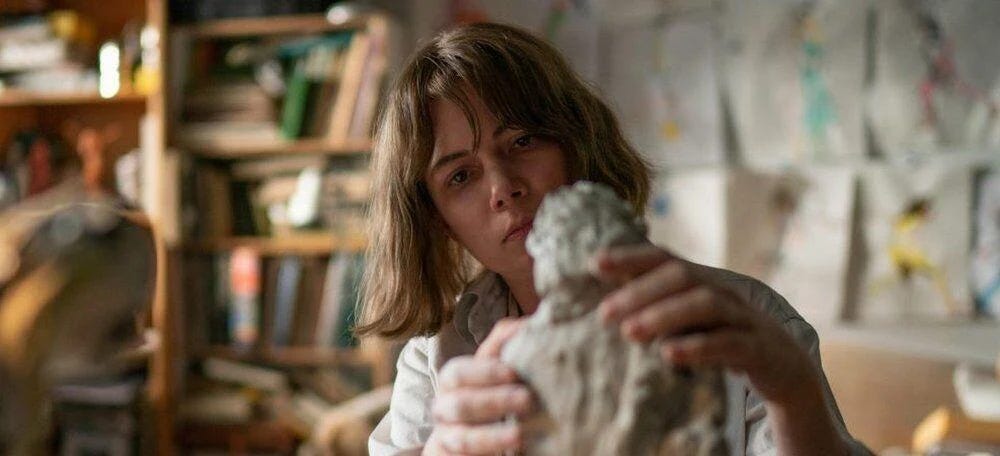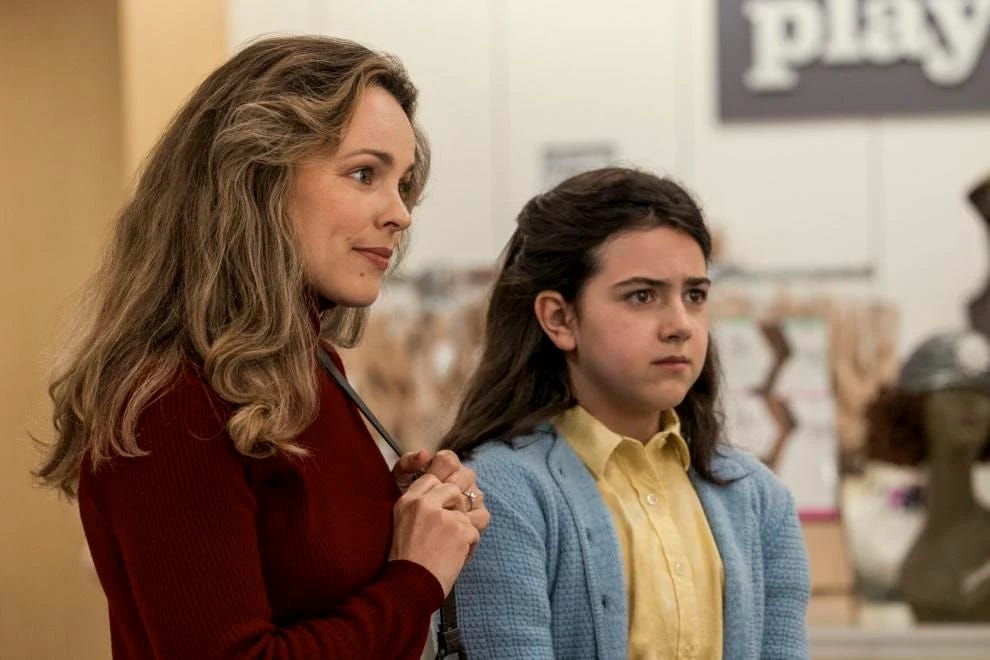(Tie) “Barbie”/”Oppenheimer” – Okay, maybe I’m being a little cute at giving the top slot to the collective “Barbenheimer.” But aside from it being such an unexpected and delightful cultural phenomenon, the new masterpieces by Christopher Nolan and Greta Gerwig, placed side by side, reveal so much that is meaningful and irreplaceable about movies and the theatrical experience in general.
Nolan’s “Oppenheimer” is a towering filmmaking achievement, drawing on all the tools at one of our most acclaimed living filmmaker’s disposal to tell the story of one complicated, brilliant man and his reckoning with the crater he left in our world. It’s complex, it’s thrilling, it’s scary, it’s packed with wonderful performances, it’s about big things, and it demands to be seen on the biggest screen available with the best sound.
But here’s the thing. If that biggest screen had been in an empty theater, I think it would have hit me the same way. I didn’t need an audience around me for “Oppenheimer” to affect me. But “Barbie” provides the other essential half of the moviegoing equation, beautifully engineered for a collective audience experience. Together, as a day-glo pink unit, we rode the emotional highs and lows of the movie, unpack its delightfully dense web of jokes, sight gags, references, and over-the-top-but-yet-achingly-real performances (a second viewing at minimum is essential), and feel the movie’s energy as a wave in the theater. That viewers, and so many different kinds of viewers, responded to the generosity and open-heartedness that “Barbie” brought, while also tapping into the subversive and sophisticated social satire within that spirit, was something truly special.
Together, as a lightning-in-a-bottle phenomenon, “Oppenheimer” and “Barbie” made the case for movie theaters, and why we need to continue to go out together to them.
“Killers of the Flower Moon” – I felt the length of Martin Scorsese’s latest in a way I didn’t in “Oppenheimer.” But maybe that’s to the movie’s credit, as it dives deep into an Oklahoma community where the local Indigenous people have all the money because of oil rights, but the whites have all the power. We feel the injustices and horrors piling up as the white establishment robs, swindles and murder the Native Americans in plain sight, one after the other. It’s all masterfully done by Scorsese, with time taken to explore a wide range of colorful characters. And the film denies us the catharsis we expect when the FBI finally brings the perpetrators to justice – they serve their time and go on with their lives, while the Indigenous community remains permanently shattered.
“Spider-Man: Across the Spider-Verse” – In a year when audiences began to look askance at both superhero movies and sequels, here was a movie that was both, and dazzled. The energetic mix of animation styles and new Spider-Men built on the brilliance of the original, expanding and deepening its multiverse without losing any of the charm.
“Showing Up” – Kelly Reichardt’s latest is a quiet comedy about the hard, often lonely work of making art, with Michelle Williams delightfully prickly as a dour sculptor toiling in the shadow of her much more successful (and carefree) landlord (Hong Chau). “The work is its own reward” becomes a saying that’s both inspiring and cautionary.
“Asteroid City” – Like “The French Dispatch,” I walked into Wes Anderson’s latest with a slight amount of trepidation – not that I wouldn’t enjoy it, but that it would feel like Wes was treading water, trapped in his own particular filmmaking obsessions. Instead this was one of his best, building on the familiar rhythms of what he’s done before while expanding on them for a gentle, healing meditation on grief.
“Sanctuary” – What a blast this erotic thriller is, as Margaret Qualley and Christopher Abbott play a dominatrix and her wealthy client locked in a playful battle of wills during one night in a luxury hotel suite. There’s no sex (well, hardly), and the charge comes from the power of language, as the two combatants jockey for the upper hand and, if they don’t kill each other first, might just fall in love.
“The Holdovers” – It made me a little sad that Alexander Payne’s latest opens with a clever animation that imagines what Focus Features’ logo might be in the 1970s, when his latest character-driven comedy-drama is set. It made me sad because it suggested that a film like this, steeped in character development, moody rhythms and a weary generosity of spirit, might be an anachronism in modern movies. I hope not, because movies like this are a balm for the soul, and we need more of them.
“John Wick 4” – Let John Wick rest in peace, I say. Let the franchise go out on a high note with this instant action classic, as Keanu Reeves' taciturn assassin battles his way through one operatic gun battle after another.
“Bottoms” – This year also marked the return of the R-rated studio comedy, with raunchy delights like “No Hard Feelings” and “Joy Ride.” But the best of them all was Emma Seligman’s wild and violent teen comedy, wonderfully silly and unafraid to tweak (or punch) the nose of convention.
“Are You There God? It’s Me, Margaret.” – Kelly Fremon Craig’s tender adaptation of the Judy Blume classic may be set in the ‘70s, but it’s no exercise in nostalgia. Like Blume’s books, the film confronts head-on the hard questions that young girls (and their parents) ask with humor and frankness. But if the film is honest enough not to provide easy answers, it extends empathy towards all of its characters.
Runners up: “Afire,” “Passages,” “Little Richard: I Am Everything,” “The Lesson,” “Godzilla Minus One, “Mission: Impossible – Dead Reckoning Part One,” “The Killer,” “The Origin of Evil,” “Dungeons & Dragons: Honor Among Thieves,” “The Boy and the Heron.”







